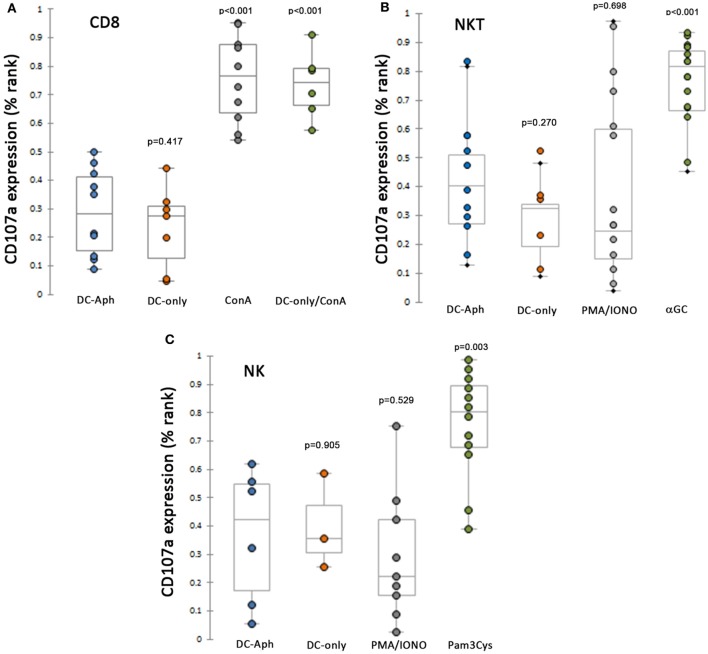Figure 2.
CD8 immune T, NKT, and NK lymphocytes are suppressed from cytotoxicity (CD107a expression) when exposed to A. phagocytophilum-loaded dendritic cells (DCs). (A) Splenic CD8 T lymphocytes from immune animals are suppressed from expressing CD107a to a level observed with mock-loaded DCs, and significantly lower than when cells were stimulated by ConA. (B) As above, splenic NKT cells are unable to generate CD107a as a cytotoxic reporter when stimulated by A. phagocytophilum-loaded DCs more than mock stimulation, despite effective cytotoxic responses observed to control stimulus αGalCer-loaded DCs. (C) NK cells are suppressed from expression of CD107a under the same circumstances, except for the use of the control stimulus Pam3Cys, a TLR2 agonist. DC-only, mock-loaded DCs; DC-Aph, A. phagocytophilum-loaded DCs; ConA, concanavalin A; αGC, α-galactosylceramide; PMA/IONO, phorbol-12-myristate-13-acetate/ionomycin C; Pam3Cys, N-α-Palmitoyl-S-[2,3-bis(palmitoyloxy)-(2RS)-propyl]-l-cysteine. Variable results are shown for the use of PMA/ionomycin in generated cytotoxic responses. Responses are measured as the proportion of each gated cell population expressing CD107a divided by the total number of the gated cell population. Because the values were not normally distributed, the proportions were ranked by percentage and tested using Mann–Whitney tests for non-parametric significance, with a two-sided α = 0.05. p Values are shown compared to DC-Aph for each condition. Aph, Anaplasma phagocytophilum.

